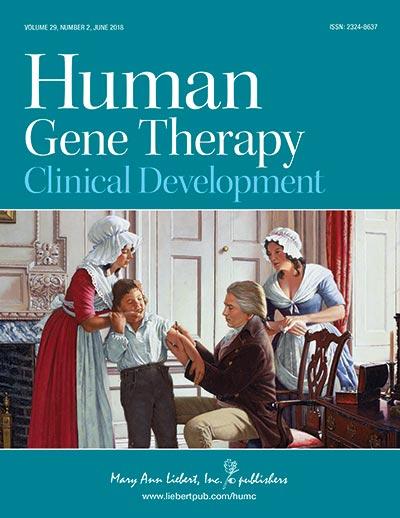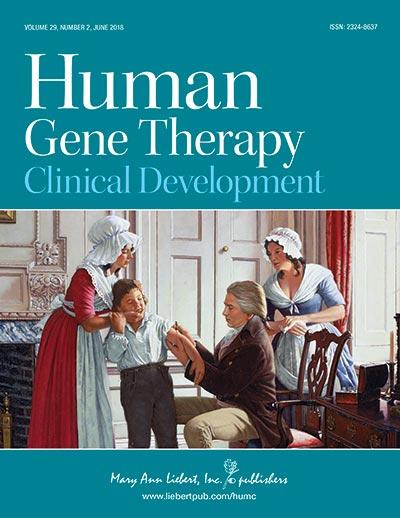
Credit: Mary Ann Liebert, Inc., publishers
New Rochelle, NY, September 19, 2018– Recently, the U.S. National Institutes of Health (NIH) and Food and Drug Administration (FDA) called for the eliminating involvement of the Recombinant DNA Advisory Committee (RAC) in human gene therapy experiments, marking the end of an era of federal government oversight. While the RAC played an essential role in helping human gene therapy research evolve to where it is today, James M. Wilson, MD, PhD, Editor, Human Gene Therapy Clinical Development, believes this is the right moment for it to exit the stage, as he explains in his Editorial "The RAC Retires After a Job Well Done," Human Gene Therapy Clinical Development, a peer-reviewed journal from Mary Ann Liebert, Inc., publishers. Click here to read the full-text article free on the Human Gene Therapy Clinical Development website through October 19, 2018.
The RAC initially set guidelines for DNA research, and its role was later expanded to en-compass the review and approval of human gene therapy research. The Committee was composed of stakeholders, including basic scientists, physicians, ethicists, theologians, and patients advocates. "The deliberations often became theatrical and, at times, quite contentious," says Dr. Wilson. Over the years, as the field of human gene therapy ma-tured and became more integrated into the biopharmaceutical industry the potential re-dundancies between the roles of the FDA and the RAC became an increasingly important issue.
"The 2018 proposal…is to completely eliminate the RAC's role in reviewing or monitor-ing human gene therapy studies," says Dr. Wilson. "The new recommendations retain the role of local Institutional Biosafety Committees in the review process, while limiting their evaluation to an assessment of biosafety risks."
###
About the Journal Human Gene Therapy, the Official Journal of the European Society of Gene and Cell Therapy, British Society for Gene and Cell Therapy, French Society of Cell and Gene Therapy, German Society of Gene Therapy, and five other gene therapy societies, is an authoritative peer-reviewed journal published monthly in print and online. Led by Editor-in-Chief Terence R. Flotte, MD, Celia and Isaac Haidak Professor of Medical Education and Dean, Provost, and Executive Deputy Chancellor, University of Massachusetts Medical School, Human Gene Therapy presents reports on the transfer and expression of genes in mammals, including humans. Related topics include improvements in vector development, delivery systems, and animal models, particularly in the areas of cancer, heart disease, viral disease, genetic disease, and neurological disease, as well as ethical, legal, and regulatory issues related to gene transfer in humans. Its companion journals, Human Gene Therapy Methods, published bimonthly, focuses on the application of gene therapy to product testing and development, and Human Gene Therapy Clinical Development, published quarterly, features data relevant to the regulatory review and commercial development of cell and gene therapy products. Tables of contents for all three publications and a free sample issue may be viewed on the Human Gene Therapy website.
About the Publisher
Mary Ann Liebert, Inc., publishers is a privately held, fully integrated media company known for establishing authoritative peer-reviewed journals in many promising areas of science and biomedical research, including Nucleic Acid Therapeutics, Tissue Engineering, Stem Cells and Development, and Cellular Reprogramming. Its biotechnology trade magazine, GEN (Genetic Engineering & Biotechnology News), was the first in its field and is today the industry's most widely read publication worldwide. A complete list of the firm's 80 journals, books, and newsmagazines is available on the Mary Ann Liebert, Inc., publishers website.
Mary Ann Liebert, Inc. 140 Huguenot St., New Rochelle, NY 10801-5215 http://www.liebertpub.com
Phone: (914) 740-2100 (800) M-LIEBERT Fax: (914) 740-2101
Media Contact
Kathryn Ryan
[email protected]
914-740-2250
@LiebertPub
http://www.liebertpub.com
Original Source
https://home.liebertpub.com/news/is-the-end-of-the-recombinant-dna-advisory-committee-rac-a-good-thing/2430 http://dx.doi.org/10.1089/humc.2018.29034.wil





